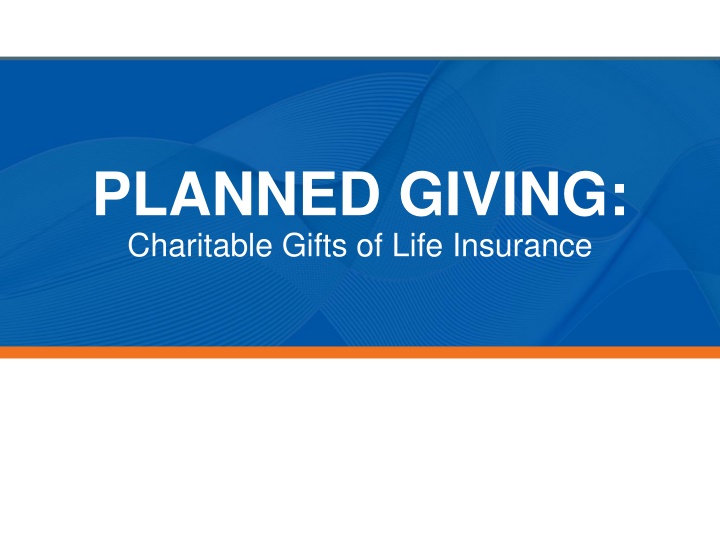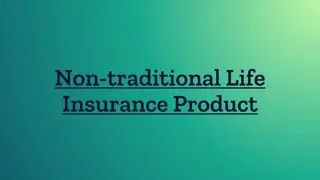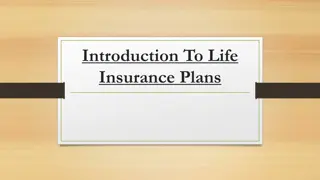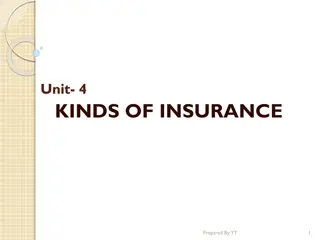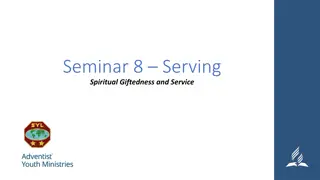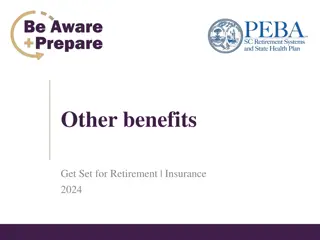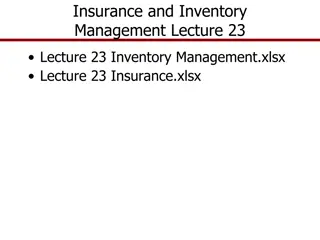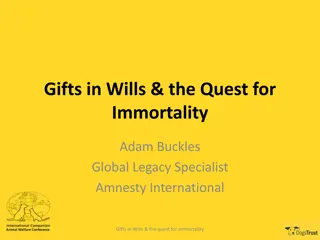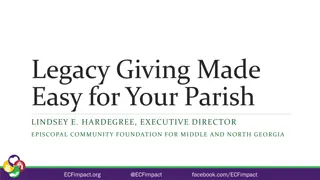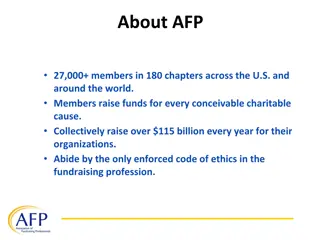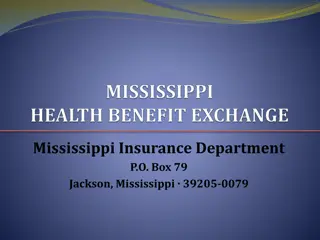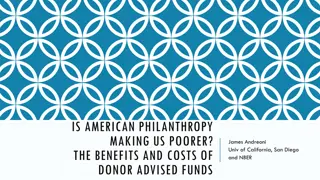Charitable Gifts of Life Insurance: Planned Giving Benefits
Charitable gifts of whole-life insurance policies are a popular form of planned giving, offering substantial benefits to both donors and charities. These gifts allow for larger contributions, simplify estate planning, and provide tax advantages. Explore the advantages of donating life insurance policies to support charitable causes.
Download Presentation

Please find below an Image/Link to download the presentation.
The content on the website is provided AS IS for your information and personal use only. It may not be sold, licensed, or shared on other websites without obtaining consent from the author.If you encounter any issues during the download, it is possible that the publisher has removed the file from their server.
You are allowed to download the files provided on this website for personal or commercial use, subject to the condition that they are used lawfully. All files are the property of their respective owners.
The content on the website is provided AS IS for your information and personal use only. It may not be sold, licensed, or shared on other websites without obtaining consent from the author.
E N D
Presentation Transcript
PLANNED GIVING: Charitable Gifts of Life Insurance
Planned Giving Gifts of Whole-Life Insurance Policies are becoming increasingly more popular as forms of Planned Giving Gifts of fully-paid whole-life policies Gifts of existing whole-life policies with remaining premiums Gifts of new, whole-life policies Why Life Insurance? A donor can make a substantially larger gift to charity by using life insurance than by giving any other assets. Annual premiums mature into a substantial death benefit. If the donor does not intend to use the policy as a source of cash, a gift of a policy is not perceived as a loss of an asset from the estate. A gift of an existing policy is easy, involving a simple transfer in ownership. 2
Planned Giving Why Life Insurance? (Continued) A charity-owned life insurance policy requires less administration by the charity compared to many other assets like real estate or business interests. A charity as a policy owner may take advantage of cash values in the policy before the donor s death through loans or withdrawals. The death benefit, whether from a policy owned by the charity or from a policy with the charity as a beneficiary, is received by the charity without reduction for estate or income taxes and is not subject to the delays and expenses of probate. Charitable Deduction for Income Taxes Donors are encouraged to discuss tax consequences with their tax preparers 3
Planned Giving Charitable Deduction for Income Taxes (Continued) Donor transfers or gives existing policy to charity Income tax charitable deduction in year of gift Amount deductible is the lesser of the donor s basis in the policy or the policy value. Deduction is limited to a percentage of donor s Adjusted Gross Income (AGI). Deductible amounts not used in current year may be carried forward for the next five year. Donor pays premiums on policy owned by charity Charitable deduction in year of premium payment Transfer cash to charity to purchase a new policy Charitable deduction in year of cash gift 4
Planned Giving Charitable Deduction for Income Taxes (Continued) Donor names charity as beneficiary While charity receives a benefit at donor s death, the donor does not get a current charitable deduction for taxes. Death benefit may be included in the estate for estate tax purposes; if so, the estate receives an offsetting estate tax charitable deduction. The Table on the Next Page Provides Examples of Whole-Life Premiums and Tax Deductions 5
Planned Giving Whole-Life Policy Amount Annual Premium/ Tax Deduction Years of Payment Age Male 40 $50,000 $1,896 10 Female 40 $50,000 $1,684 10 Male 40 $100,000 $3,371 10 Female 40 $100,000 $3,306 10 Male 50 $50,000 $2,671 10 Female 50 $50,000 $2,383 10 Male 50 $100,000 $5,281 10 Female 50 $100,000 $4,706 10 Male 60 $50,000 $3,670 10 Female 60 $50,000 $3,244 10 Male 60 $100,000 $7,280 10 Female 60 $100,000 $6,428 10 6
Questions or Need More Information? Contact Ellen Woods, President, American Foundation for Pharmaceutical Education Woods@afpepharm.org (703) 875-3095 7
